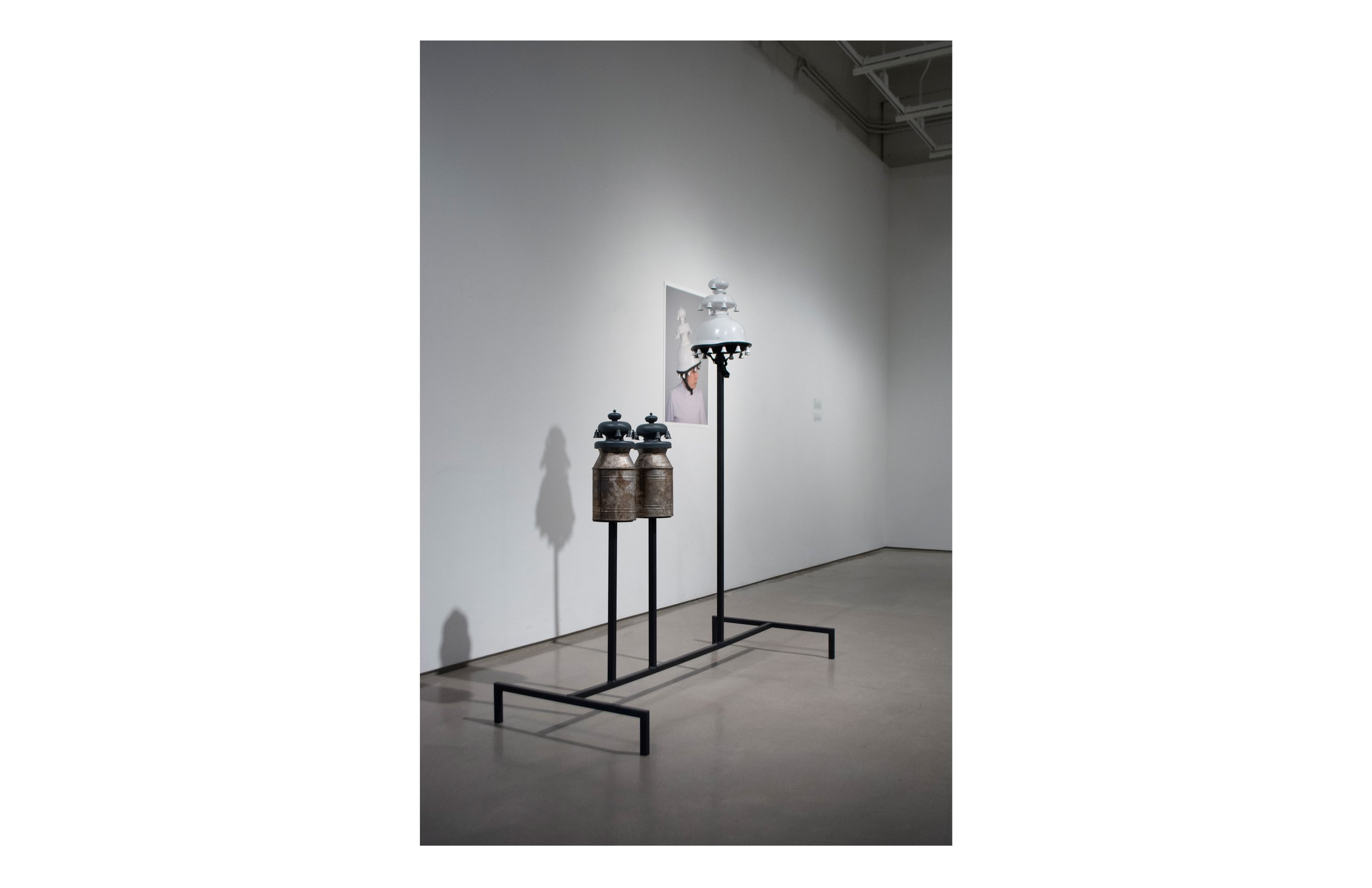Blue Milk and Other Short Stories / 2023
In Blue Milk and Other Short Stories, Egnater engages in a type of world building or alternate history. Blue Milk is an invented product in an invented world; influenced by the mythology of Techelet or “biblical blue”, the moral fable of the golden calf, the 1971 adaptation of Fiddler on the Roof, and the artists own fraught relationship with healthcare. The exhibition explores Blue Milk through costumes, tools, and containers captured through photography, fibers, metal fabrication, and metal casting.
Medical Suit / 2023 / suit, cast aluminum cow mask, gloves
Historically, in anti-semitic propaganda, the Jewish people are often depicted as disease carrying animals or something not quite human. Over time, this trope has been taken and evolved into a self-deprecating Jewish humor. The cow mask continues this tradition of zoomorphic Jews. However, rather than a self-deprecating humour, it questions unholiness rather than inhumanness.
Ghillie Suit / 2023 / modified snow ghillie suit, western fringe, jewish ritual fringe
The garment is created from the combination of western fringe and Jewish ritual fringe. This combination stems from the immigration story of Nudie Cohn. Cohn was an Eastern European Jew who fled Tsarist Russia. After reinventing himself in Los Angeles, he opened “Nudie’s of Hollywood” and defined the over-the-top western aesthetic seen in his iconic designs for stars such as Elvis Presley and Elton John.
Milk Delivery Suit / 2023 / suit, milk bottles
The suit was created as a solution for Tevye, the main character and the town’s dairyman of the 1971 movie adaptation of Fiddler on the Roof. As his life slowly unravels throughout the film, Tevye’s horse goes lame and he decides to pull his dairy delivery cart to continue his business. Egnater was struck by Tevye's choice to physically take the place of a horse and his choice to pull a cart that only held two milk cans. She approached the problem with a solution, one that mimicked a human-centered design approach.
Molten Calf / 2022 / bronze molten calf, titanium dioxide patina
The bronze statue dissects the story of the golden calf. The bottom section is modelled from a melting simulation in Blender, while the top features a flipped calf ready to melt. Though named the “golden calf”, the original icon was created from a collection of jewelry and precious items. With this collection of varying metals, an alloy such as bronze, may be a more accurate representation.
Blue Milk and Other Short Stories / 2023
Milk Cans and Helmet / 2023 / cast aluminum milk cans, 3D printed milk can lids, 3D printed bells, modified helmet
In this mixed media work, Egnater is influenced by the forms of Torah Crowns. When not in use, Torah Scrolls are often dressed in different types of adornments such as a mantle cloth, a shield, and/or crowns. The placement of the torah crown plays with the placement of power.
Tools / 2023 / cast aluminum hands, cast aluminum torah crown, wood
Though they are the size of a staff, the tools mimic the form of a yad. A “yad”, usually the size of a pen, is used as a place marker while reading a Torah scroll. The work moves beyond the traditional pointing hand and introduces the cupping hands.









